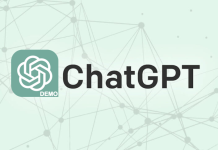Attendance tracking has always been a critical aspect of managing educational institutions. With the advancement of technology, attendance management software has evolved significantly, bringing forth new trends that are revolutionizing the way institutions track and manage attendance. In this article, we’ll explore the latest trends in attendance tracking management software and how they are shaping the future of educational institutions.
The Traditional Challenges in Attendance Tracking
Manual Processes
Historically, attendance tracking relied heavily on manual processes, including paper-based registers and manual data entry. This was not only time-consuming but also prone to errors.
Limited Accountability
Traditional methods often lacked transparency, making it challenging to hold students and faculty accountable for attendance.
Data Security
Keeping physical attendance records raised concerns about data security, with the risk of loss or damage.
The Role of Modern Attendance Management Software
What Is Attendance Management Software?
Attendance management software is a digital solution that automates the process of tracking and managing attendance. It offers a range of features to streamline the entire process.
Key Features
- Automated Tracking: The software automatically records attendance, reducing the need for manual input.
- Real-Time Monitoring: It provides real-time insights into attendance, making it easier to identify trends.
- Data Security: Digital attendance records are more secure and less susceptible to loss or damage.
The Latest Trends in Attendance Tracking Management Software
1. Biometric Recognition
Biometric recognition, such as fingerprint or facial recognition, is becoming more prevalent in attendance tracking. It provides a high level of accuracy and eliminates the possibility of proxy attendance.
2. Mobile Attendance Tracking
Mobile apps are increasingly used for attendance tracking. Students can check in using their smartphones, making the process more convenient and accessible.
3. Cloud-Based Solutions
Cloud-based attendance management software offers the advantage of remote access and data storage. This trend allows institutions to access attendance data from anywhere, making it more flexible and scalable.
4. Integration with Student Information Systems (SIS)
Integration with SIS allows for seamless data flow between attendance management and other administrative systems, enhancing efficiency and accuracy.
Benefits of the Latest Trends
1. Accuracy and Accountability
Biometric recognition and mobile tracking enhance the accuracy of attendance records and promote accountability among students and faculty.
2. Convenience
Mobile attendance tracking and cloud-based solutions offer greater convenience and flexibility, reducing administrative burden.
3. Data Insights
Real-time monitoring and integration with SIS provide valuable insights into attendance patterns and trends, allowing institutions to make data-driven decisions.
Real-Life Applications
1. High School XYZ
High School XYZ implemented biometric recognition for attendance tracking. The system eliminated proxy attendance and improved overall accuracy by 20%.
2. University ABC
University ABC adopted a cloud-based attendance management system. This allowed faculty to access attendance data remotely, streamlining the process and saving time.
Considerations and Challenges
Data Privacy
Institutions must ensure that biometric data and attendance records are securely stored and protected.
Costs and Implementation
The initial cost of implementing these systems can be a challenge for some institutions, but the long-term benefits often outweigh the investment.
User Training
Users, including students and faculty, may need training to adapt to new attendance tracking methods.
Conclusion
The latest trends in attendance tracking management software are reshaping how educational institutions manage and monitor attendance. Biometric recognition, mobile tracking, cloud-based solutions, and integration with SIS are enhancing accuracy, convenience, and data insights.
Real-life applications at High School XYZ and University ABC demonstrate the positive impact of adopting these trends. As technology continues to advance, institutions that embrace these trends are better equipped to meet the evolving needs of attendance tracking in the digital age.
In conclusion, attendance management software has come a long way from traditional manual methods. The latest trends not only improve accuracy and convenience but also offer valuable data insights that can inform institutional decision-making. As educational institutions continue to adapt to these trends, attendance tracking is set to become more efficient, transparent, and accountable than ever before.
Read more: ad new article.

















